Fish are an integral part of a river ecosystem. The characteristics of a river are shaped by the fish that inhabit it and the insects that provide the nutrients. Developing an understanding of the basics of river ecosystems and fish ecology will unlock a greater knowledge for your next cast when fly fishing the Middle Fork Salmon River. Such knowledge can also build an appreciation of this healthy river system. Fish are crucial for transporting nutrients up and down the river corridor, regulating carbon as it moves through the river system, adjusting the sediment structure on the river bottom, linking disparate ecosystems together, and serving as indicators for the health of our river. They can be fun to catch, too, but that’s just an added bonus. People are often curious about what fish species live in the Middle Fork Salmon River, which ones we’re allowed to target, and what species are native or invasive. Read on to find these answers and more. A few may surprise you.
Westslope Cutthroat Trout
Oncorhynchus clarkii lewis
We have to start with what is probably our “flagship” fish on the Middle Fork: the Westslope Cutthroat Trout. “Cutties,” as they are affectionately known, are named for the red slashes that are usually visible on their lower jaws. There are a number of different species of cutthroat, and it can be difficult to visually distinguish the Westslope from other cutthroat trout subspecies, but the Westslope Cutthroat Trout tends to have more small spots by the tail. They are native to the alluvial or freestone streams that are typical tributaries of the rivers of the Pacific and considered by many to be the crown jewel for fishing in the western U.S.
Origin: Westslope Cutthroats are native to Idaho. In fact, they’re our state fish. Archaeological evidence suggests that the cutthroat trout were among the first trout to arrive or evolve in Idaho. To complicate matters, there is another species of cutthroat that has been introduced to some lakes and streams in the Frank Church Wilderness called the Yellowstone Cutthroat. However, these are very rare on the Middle Fork. The majority of what we see is the Westslope subspecies.
How to ID: The big giveaway that distinguishes the cutthroat is the reddish-orange slashes on the underside of the lower jaw. The body color can vary from steel gray to olive green and usually closely matches the fish’s habitat. Sides may be yellow or brown, with red or pink along the belly. Spots on the fish are usually more closely grouped toward the tail.
Feeding Habits: Westslope Cutties feed mainly on insects and zooplankton. Cold, clean, and high-quality water is a requisite for their survival, as well as deep pools where they can shelter from the harsh winter climate. While it’s hard to find scientific evidence for this fact, many guides swear that cutthroat trout eat a larger portion of their diet on the surface than other species do. They’re opportunistic surface eaters because feeding windows are limited in the alpine environments where they live, and they have to capitalize on their limited chances for calories.
Fishing: Few fish are as willing as a cutthroat to take a fly, largely because of their surface feeding habits. This is great for us as fishing guides because it means that dry flies are often a very effective way to target them. The optimal fly pattern, color, and size vary with the season, but Purple Hazes, Stimulators, Fat Alberts, and Chubby Chernobyls are going to be in just about every guide’s box. While they love dry flies, it’s also possible to catch cutthroats subsurface using nymphs.
Rainbow Trout
Oncorhynchus mykiss
Next on our list is our second most popular game fish: the Rainbow Trout. One remarkable thing about these fish is there are two notable forms that exist in the Middle Fork and around the world: an anadromous form called steelhead and a freshwater form called rainbow trout. They are genetically identical, and it is a question of much research and significant debate as to why some Rainbows migrate to the ocean and others do not. To confuse matters further, it’s been shown that steelhead can have offspring that don’t migrate to the ocean, and resident ‘bows can have offspring that go on to be anadromous. Idaho River Journeys nymphing guru Montana Dave has more to say on the subject, but we’ll leave it there for now. In this portion of the article, we’ll focus on Rainbow Trout that live on the Middle Fork year-round. A staple of western fly fishing, the feisty Rainbow has a permanent place in most fly fishermen’s hearts.
Origin: Are Rainbow Trout native to Idaho? Yes and no. There is one line of Rainbows, called a Redband Trout, that evidence indicates has lived in Idaho for thousands of years. Clearly, these fish and their descendants are native and predate the arrival of European settlers. However, since settlers first arrived in Idaho there have been thousands of non-native Rainbow trout introduced into our lakes and streams for fishing, and these newcomers have interbred with the Redbands. Because of this, the Rainbows we find on the Middle Fork probably have some ancestors that evolved in Idaho streams for thousands of years and others that arrived much more recently.
How to ID: The appearance of Rainbows varies greatly depending on habitat. They may be silvery in lakes and reservoirs and range from olive to greenish-blue in streams. Their sides may show a red or pink streak, and there’s often a white tip on the pelvic (belly) and anal fin. You’ll also often see irregular spots on their back, sides, head, dorsal fin, and tail. The spots are generally more evenly distributed from the head than cutthroat trout. Even on the Middle Fork, Rainbows often exhibit very different coloration depending on size, age, and where the fish spends its time, ranging from very silver or chrome-colored to very dark deep red. These color variations occur naturally from genetics, gender, time of year, and food source.
How to differentiate Rainbows and Cutthroats: Rainbows usually lack the distinctive orange slash on the lower jaw that you will find on a Cutthroat. Rainbows usually have a broad, reddish stripe that extends along their lateral line from their gills to their tail, hence the name for the local strain “Redbands.” Cutties generally lack this red stripe. Lastly, spots tend to be more evenly distributed throughout the body of a Rainbow. This pattern allows for differentiation from the Cutthroats, where spots tend to cluster more around the tail.
Feeding Habits: In streams, Rainbows primarily feed on drifting organisms. They may ingest aquatic vegetation but are probably targeting attached invertebrates. Their diet changes seasonally, but insects remain the dominant food source throughout life. Bigger rainbows also find calories eating smaller baitfish.
Fishing: Middle Fork Rainbows, while not quite as voracious surface feeders as our Cutthroats, are often caught on dry flies throughout the summer season. Many of the patterns and approaches that are effective for Cutthroat work well for Rainbows. Additionally, because bigger ‘bows often consume more of their diet under the surface, anglers can find greater success with nymphs, soft hackles, and streamers. The larger Rainbows lower down on the Middle Fork often have a beautiful dark red color and are a joy to catch.
Cutbows
Oncorhynchus clarkii × O. mykiss
Because the two previously mentioned species commonly inhabit the same range and habitats, some populations have interbred to produce hybrid offspring populations which are commonly known as “cutbow” trout. We see a fair amount of cutbows on the Middle Fork.
How to ID: Cutbows can present challenges as far as identification goes, but the telltale signs include a combination of both rainbow and cutthroat trout characteristics. They will often possess the classic cutthroat orange jaw slash combined with the redder sides and more even spot distribution of the rainbow. Cutbows also often possess white tips on their fins, which pure cutthroat lack. Because interbred cutbows are also fertile, crossbreeding has been going on for generations on rivers like the Middle Fork. This leads to some fish that are somewhere along the spectrum between Rainbow and Cutthroat and therefore very difficult to identify.
Feeding habits, origin, and fishing are very similar to Rainbows and Cutthroat trout.
Bull Trout
Salvelinus confluentus
Predacious and dominant, Bull Trout used to populate streams around the West and served as apex predators for native Western fish populations. Sadly, due to overfishing and their need for pristine habitat and clear, cold water, Bull Trout populations have declined significantly over the last 70 years. Today they are listed as “Threatened” under the US Endangered Species Act. The good news is that the Middle Fork Salmon provides Bull Trout with exactly the habitat they need, making it one of the best Bull Trout streams in the US.
Origin: Bull Trout are native to Idaho, and before the arrival of settlers were commonly found in lakes and rivers around the west.
How to ID: Olive green with brown above and on sides, the Bull Trout has small, pale yellow-to-crimson spots on a darker background, fading to white on the belly. The upper body is generally covered with yellow spots, and sides with red or orange spots. They often have white stripes on the end of their fins.
Fishing: Many anglers in Idaho are confused on this point: can you legally target Bull Trout? Given their threatened status, it is definitely prudent to treat Bull Trout with extra care: always use barbless hooks and (should you be fortunate enough to catch one) minimize handling the fish, keep it in the water, and release it as soon as possible. Per IDFW regulations, it is legal to fish for Bull Trout as long as they are released immediately.
Exactly how to go about catching one, however, is another matter. Generally, given their size and carnivorous nature, Bull Trout will eat streamer or nymph patterns. Anything that looks to be of enough caloric density to motivate them to move is a good place to start. There are also a few stories each season of somebody hooking a small cutthroat only to have that fish eaten (fly and all) by a big hungry Bull Trout. The ensuing fight on light tackle almost always goes the fish’s way and leaves the fisherman wide-eyed and broken-hearted.
Bull trout are an amazing part of the ecosystem here in Idaho. We generally avoid targeting them in favor of other game fish that eat dry flies more readily and are not on the Endangered Species List.
Mountain Whitefish
Prosopium williamsoni
Ah yes, our beloved Mountain Whitefish. This fish can be a bit polarizing for anglers. Some love Whitefish because they’re different, they can grow to large sizes, and they are often likely to eat a nymph if it’s drifted by their nose. “Day savers” is what a guide friend in Oregon calls them. Others like to hate on the Whitefish for its smallmouth, extreme sliminess, and general lack of fight. Either way, Mountain Whitefish are a native and important part of our river ecosystem here on the Middle Fork.
Origin: Mountain Whitefish are native to Idaho. They are very versatile, living in habitats ranging from Alaska to the upper Missouri river. They prefer cold, clear water and are generally bottom feeders.
How to ID: Mountain Whitefish are generally light grayish blue on the back, silvery on the sides, with a dull whitish belly. Their main distinguishing feature is their smallmouth, which is turned down to feed on insect larvae and other invertebrates off of the river bottom.
Fishing: We rarely choose to target Whitefish here on the Middle Fork. This is because they generally don’t eat dry flies and they usually give less of a fight than Rainbows or Cutthroats do. However, it can be a fun adventure to throw a nymph on and try to hook a “hawg” Whitefish at the bottom of some of the larger pools on the Middle Fork where they like to congregate.
Sucker Fish
Catostomus
Like Whitefish, sucker fish are not most anglers’ first choice of target. Their large, downturned mouths and drab colors certainly make them unlikely to win any beauty contests. That said, they are also similar to Whitefish in the sense that they are an integral and native part of the Middle Fork fish ecosystem. There are eight species of sucker fish in Idaho, and at least three of these — the Bridgelip, Mountain, and Largescale — are commonly found on the Middle Fork.
Origin: Despite their appearance, these fish are native to Idaho and the Middle Fork.
How to ID: Sucker fish can vary in color. The back and sides can be bronze, brown, or grayish transitioning to white, cream, or pale yellow color on belly. They all share long, compressed torpedo shaped bodies and short conical heads with distinct down facing mouths with weak and fleshy lips and no teeth. Real lookers.
Fishing: Sucker fish can often be found on the Middle Fork in similar places to Whitefish: the bottoms of large pools and runouts. They can grow to enormous sizes. While they’re bottom feeders as well, they tend to get caught more often than Whitefish because they more commonly eat on the surface. Due to their perceived ugliness and lack of fight, they are almost never targeted as a game fish on the Middle Fork. They are protected in Idaho and harvest is illegal.
Northern Pikeminnow
Ptychocheilus oregonensis
These fish are small, native, and carnivorous. While they can grow to sizes of 25 inches (the world record is allegedly 7 lbs.) it is rare to see them reach significant size on The Middle Fork. They are an important food source for larger fish such as Bull Trout, Cutthroats, and Rainbows. Western states in the Snake and Columbia river systems have had issues with Pikeminnow negatively affecting migratory salmon populations. Because of this, many of these states have instituted bounties paying fishermen to harvest Pikeminnows in an effort to protect salmon. One Washington angler earned over $71,000 dollars on Pikeminnow bounties in 2018, which is both impressive and hilarious.
White Sturgeon
Acipenser transmontanus
Dinosaurs in more ways than one, White Sturgeon are rarely seen on the Middle Fork. These prehistoric beasts can grow up to 14 feet in length with a maximum published weight of almost 1,800 pounds and the oldest recorded specimen reaching 104 years of age. You are unlikely to catch one on the Middle Fork, and if you do, you are unlikely to land it on your 4-weight.
Origin: White Sturgeon range from the Gulf of Alaska to Baja California, and up and down the Columbia, Snake, and Salmon river systems. While their large size and dietary needs make permanent residential Sturgeon in the Middle Fork unlikely, there have been numerous sightings of the fish in our river over the past few years.
How to ID: If you are fortunate enough to see one of these, you are unlikely to mistake it for anything else. Their bodies are greyish white and have five rows of bony plates or scutes. They have a large downward facing mouth with four barbels in front of it.
Fishing: Catch and release. Good luck.
Is that it for Middle Fork fish species? Well, no. IDFG lists over 25 species of fish on the Middle Fork observed in recent surveys. The list above covers our most important resident fish and those that are significant from a fishing standpoint. Observant readers will notice the absence of Chinook and Sockeye Salmon, which are worthy of their own post and are absolutely illegal for (non-tribal) anglers to target on the Middle Fork.
Sources for this post:
- Photos from: Mark Martin, John Hernandez, Skip Volpert, Idaho Fish & Game
- “Importance of freshwater fishes,” by IUCN Freshwater Fish Specialist Group
- Idaho Fish & Game Species Observed in Surveys on the Middle Fork Salmon River
- Species of the Salmon-Challis National Forest
- Thanks to IRJ Guests for letting us take photos during our Middle Fork Salmon Fly Fishing trips.
- View our Middle Fork Salmon Fishing Guide.


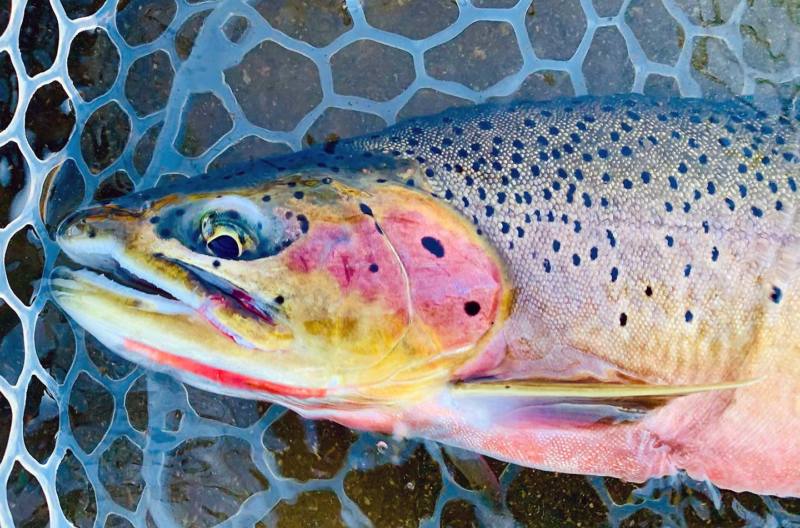
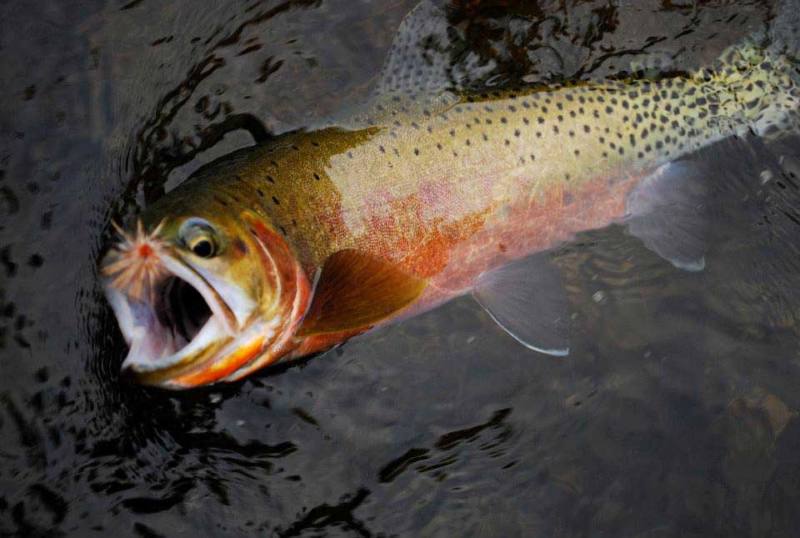

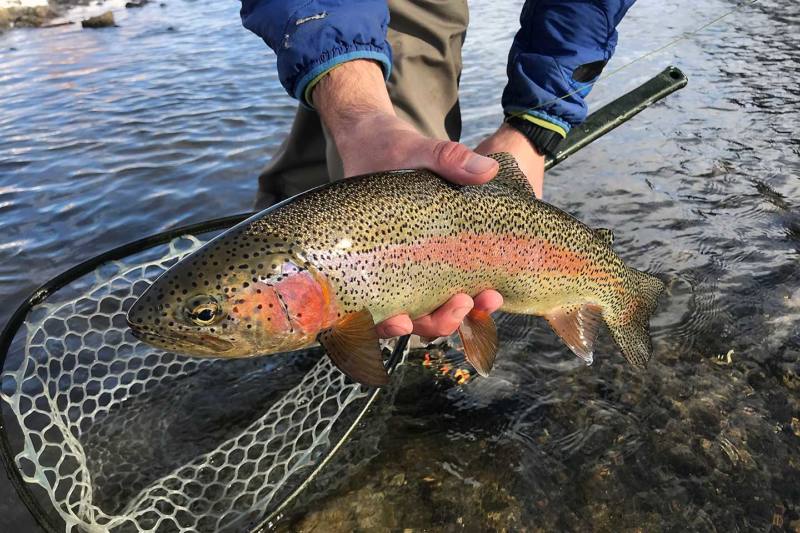
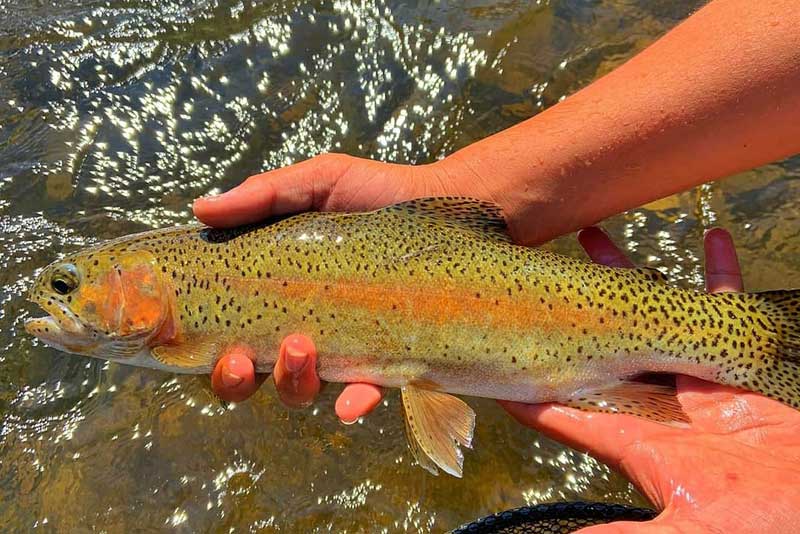
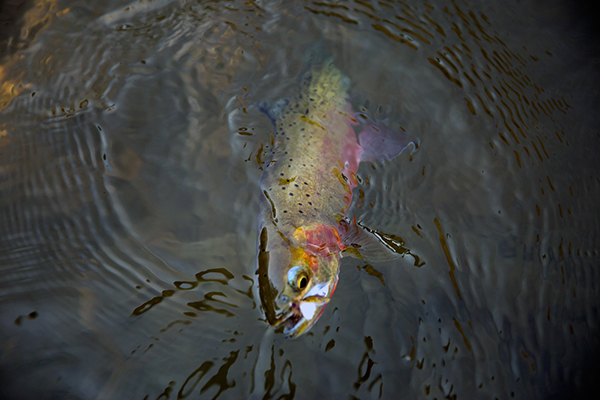

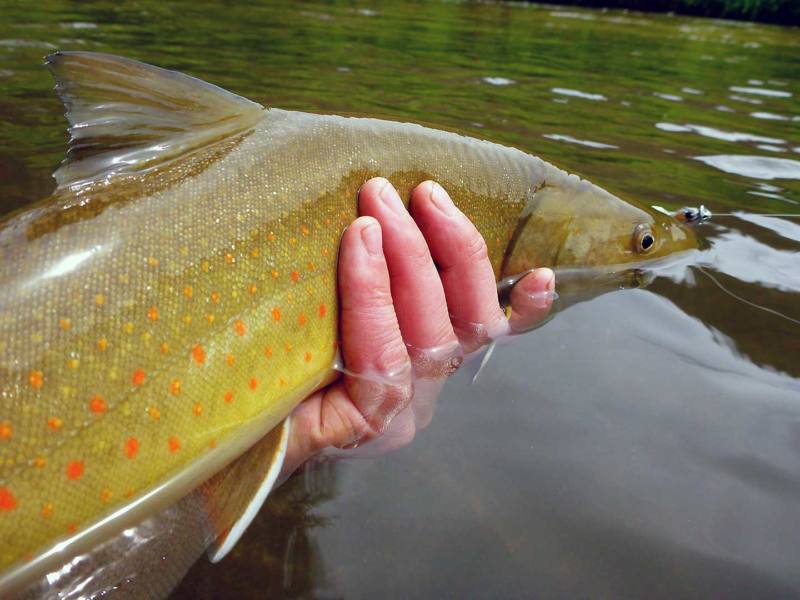
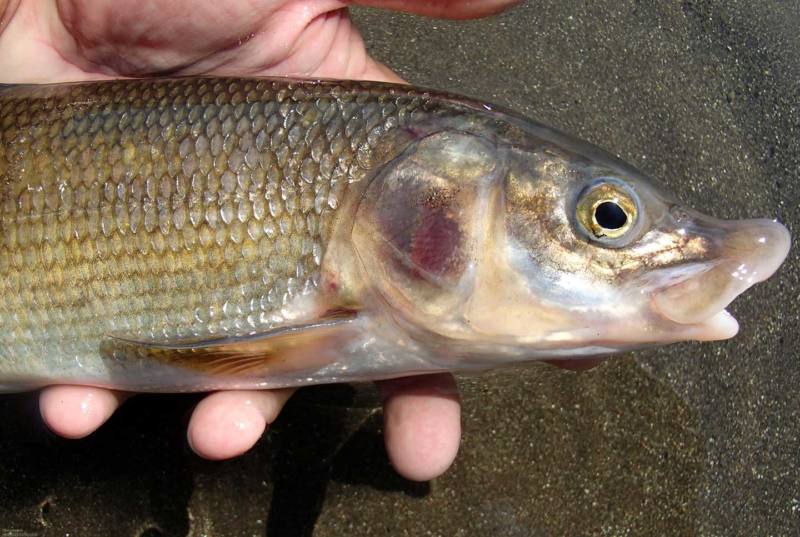
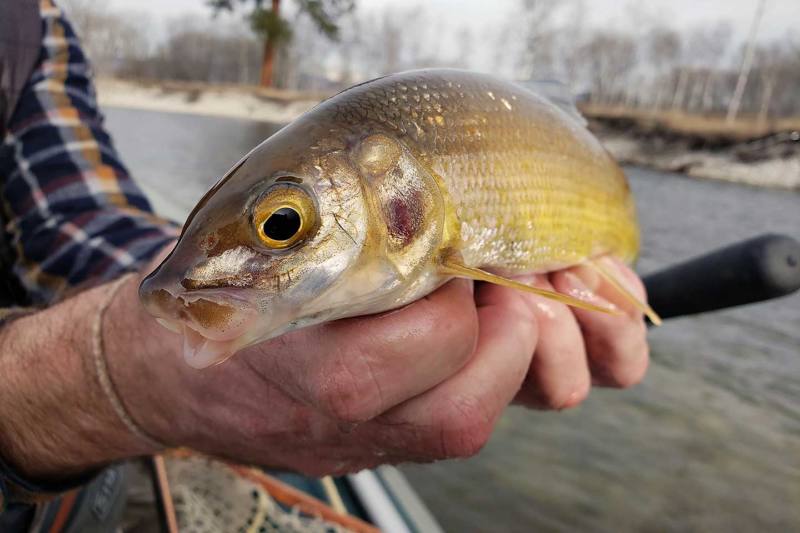
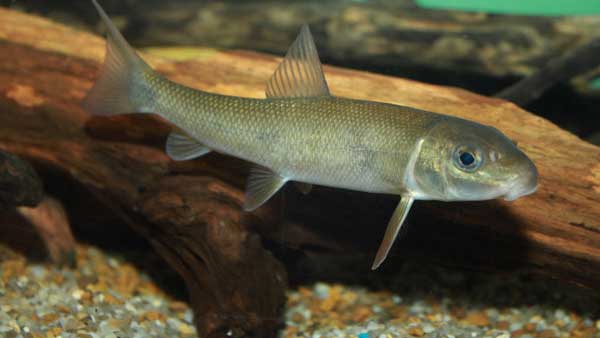

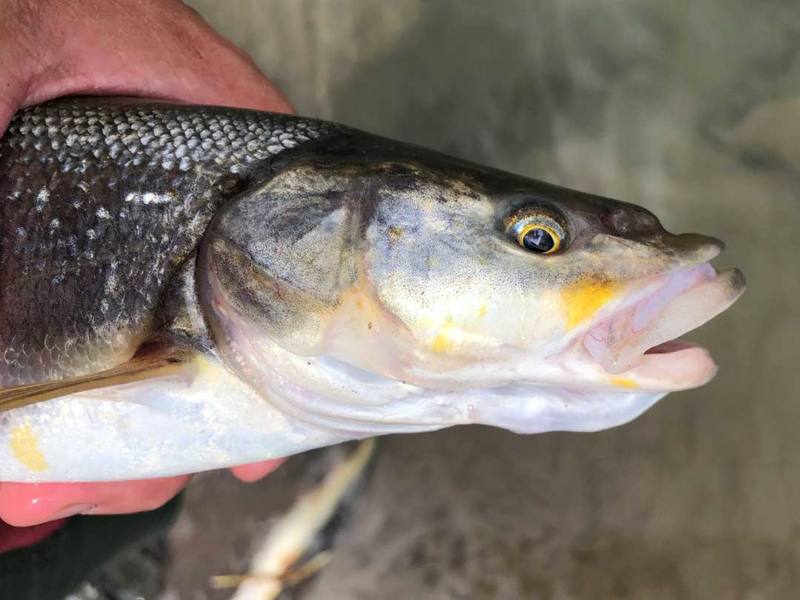
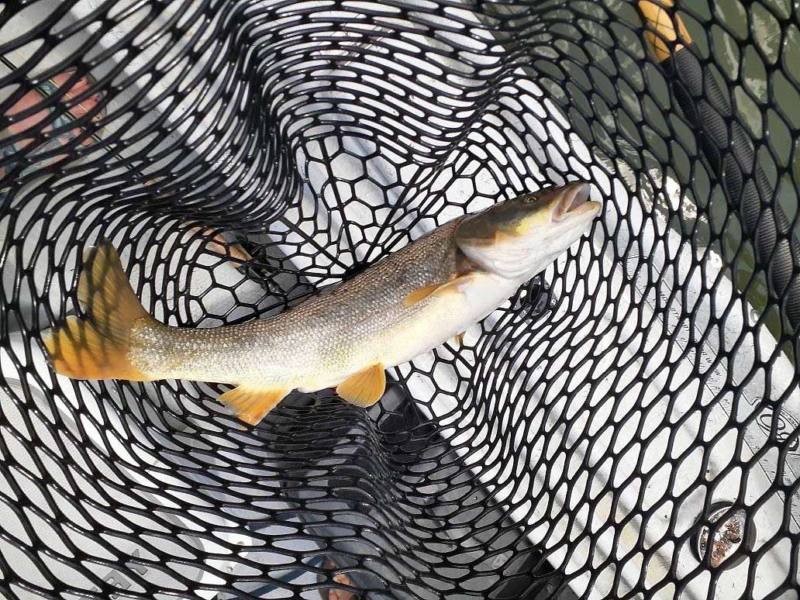
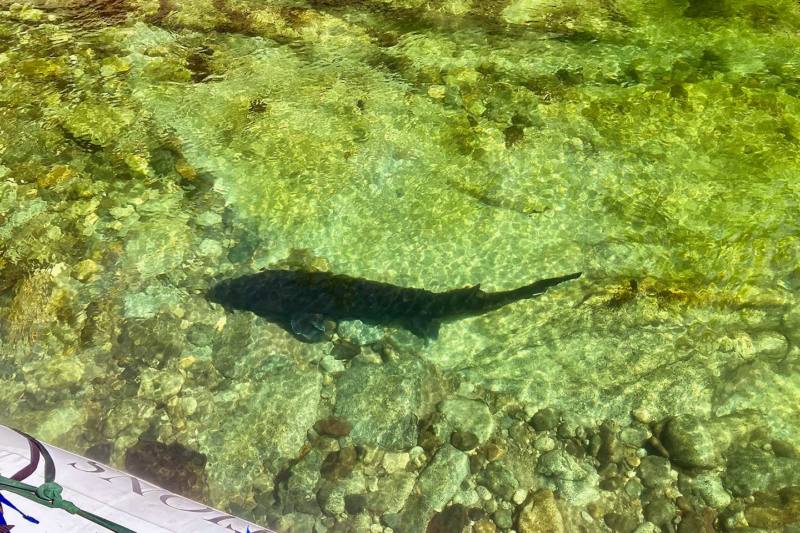







It would have been fun to see this excellent description of Middle Fork fish before we came on our trip.
Excellent blog. Thanks for this. I will also go fishing to my brother on next vacation. So, Your blog will be of great benefit to me. I hope it’s a lot of fun. Because my brother likes to catch fish. And I would love to make him happy. Thanks again.